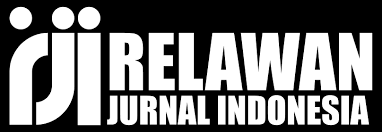ANALISIS PERBANDINGAN KETEREDIAAN AIR BERSIH ANTARA KAWASAN PERUMAHAN DAN PERKAMPUNGAN
DOI:
https://doi.org/10.61722/jipm.v3i4.1103Keywords:
Clean Water, Housing, Village, Inequality, Environmental ManagementAbstract
Clean water is an important element that affects the quality of life and sustainable development. This study was conducted to compare the availability of clean water in the Mustika Grande housing area with Kampung Areman. Using a descriptive qualitative method, information was gathered through direct observation and interviews with local residents. The findings indicate a significant difference between the two locations. Although Mustika Grande is regarded as a modern area, its groundwater quality is poor and the distribution of water from the local water company (PDAM) is uneven. In contrast, in Kampung Areman, which depends on dug wells, the water quality is better and is managed collectively by the residents. Various factors such as infrastructure, community behavior, and environmental awareness contribute to these differences. This research underscores the importance of education for the community, collaboration between sectors, and efficient clean water treatment to support the fair and sustainable availability of clean water.
References
Hafizah, A. (2024). Studi literatur review: Pengaruh sarana penyediaan air bersih terhadap kejadian diare pada balita. ZAHRA: Journal of Health and Medical Research, 4(1), 92–97.
Kementerian Kesehatan Republik Indonesia. (2017). Peraturan Menteri Kesehatan Nomor 32 Tahun 2017 tentang standar baku mutu kesehatan lingkungan dan persyaratan kesehatan air untuk keperluan higiene dan sanitasi, kolam renang, solus per aqua, dan pemandian umum. Jakarta: Kementerian Kesehatan RI.
Napitulu, D., & Zefri. (2022). Pengaruh penyediaan air bersih secara individu terhadap keberlanjutan pengelolaan air bersih di kawasan perumahan perkotaan. Jurnal Kajian Wilayah dan Kota, 1(1), 61–78. http://jurnalteknik.unkris.ac.id
Noeraga, M. A. A., Yudana, G., & Rahayu, P. (2020). Pengaruh pertumbuhan penduduk dan penggunaan lahan terhadap kualitas air. Desa-Kota, 2(1), 70–85. https://doi.org/10.20961/desa-kota.v2i1.17058.70-85
Permatasari, C., Soemirat, J., & Ainun, S. (2018). Identifikasi tingkat partisipasi masyarakat dalam pengelolaan air bersih di Kelurahan Cihaurgeulis. Jurnal Reka Lingkungan, 6(1), [tanpa nomor halaman].
Rochwulaningsih, Y. (2020). Kajian ketersediaan air bersih di wilayah perkotaan dan perdesaan. Jurnal Sains Lingkungan, 15(2), 123–132. https://doi.org/10.1234/jsl.v15i2.2020
United Nations. (2020). The 17 sustainable development goals. https://sdgs.un.org/goals
Widodo, S. (2015). Pengelolaan sumber daya air di Indonesia: Tantangan dan strategi. Jurnal Teknik Lingkungan, 21(1), 45–52.
World Health Organization. (2019). Drinking-water: Key facts. https://www.who.int/news-room/fact-sheets/detail/drinking-water
World Health Organization. (2021). Drinking-water. https://www.who.int/news-room/fact-sheets/detail/drinking-water
Downloads
Published
How to Cite
Issue
Section
License
Copyright (c) 2025 JURNAL ILMIAH PENELITIAN MAHASISWA

This work is licensed under a Creative Commons Attribution-ShareAlike 4.0 International License.












